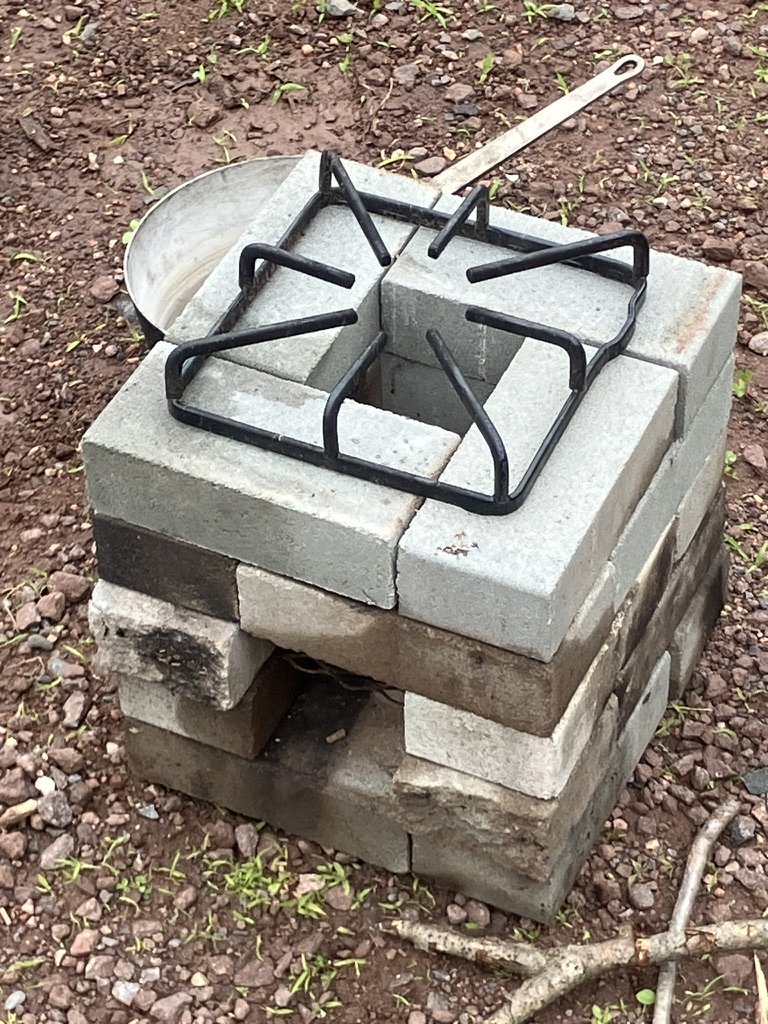Fire Studies in the Uppers (6th)
We've taken our 6th grade fire class to the outdoors to ignite the learning process with hands on work. Starting with learning how to light and hold a match, we have built up to bigger fires with bigger purposes. First off, the 6th graders are taking safety very seriously. There is always a fire tender by every fire, debris is kept clear from the fire pit, there is absolutely no running/playing during the class, and we keep water handy at all times in many forms. After the first few classes established good partner routines and safety guidelines, we got to the survival skills part: building and using an efficient stove.
Students had many chances in different partner pairs to design their own stoves using bricks. Their goal was to use as little wood as possible to boil water to get the most efficient use of their fuel that they all worked to gather from the forest. Some had instant and easy success while others struggled to get their stove just to light in the time allowed. Weather, skill, and perseverance were all factors in the students’ ability to boil water. Now that they have experience making and running a stove that utilizes draft to keep the fire hot and high enough to reach their pot of water, we are going to do some calculations to test their efficiency. The math looks something like this:
Energy from wood= volume of water * specific heat of water * temperature change.
Then, once we know our total energy, we divide it by the mass of wood burned during use. We measure the wood before and after the burn (once it's cooled and dry) to see how much mass of wood was used to make enough energy to boil the water. This study has been a wonderful opportunity to have science class be both an analytical/theoretical practice as well as a place to learn practical life skills.




